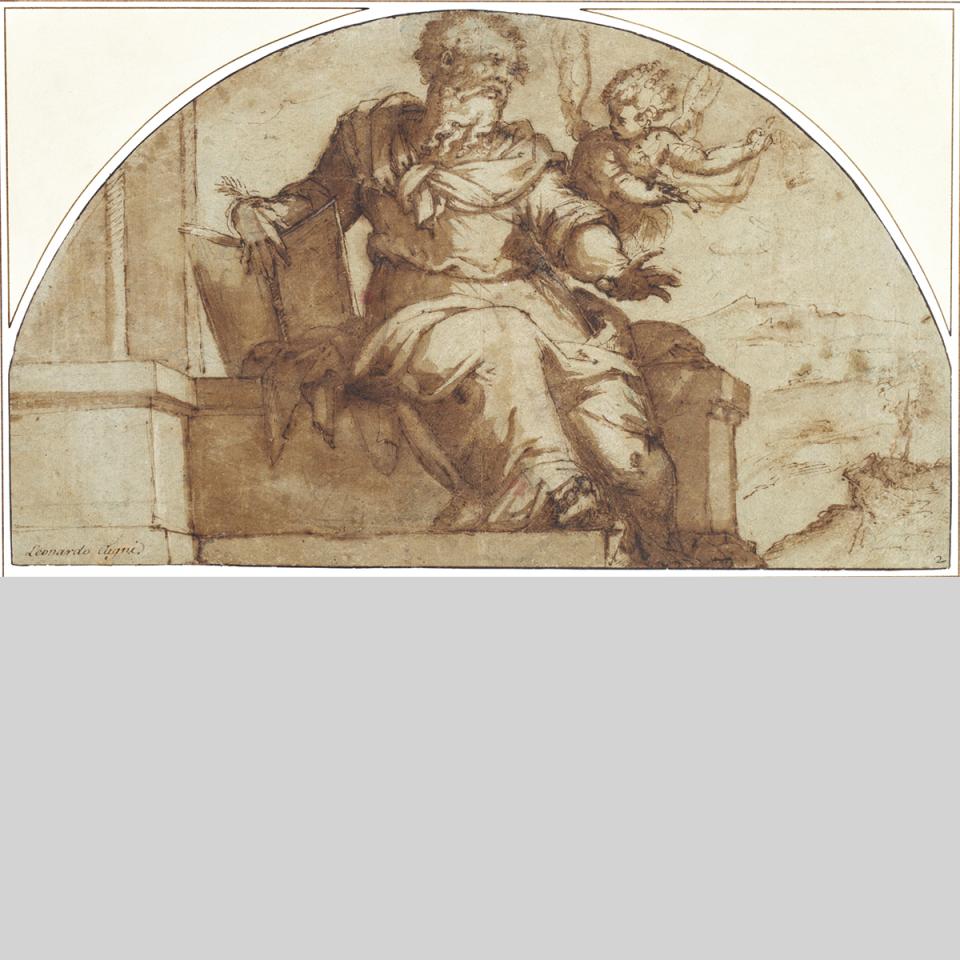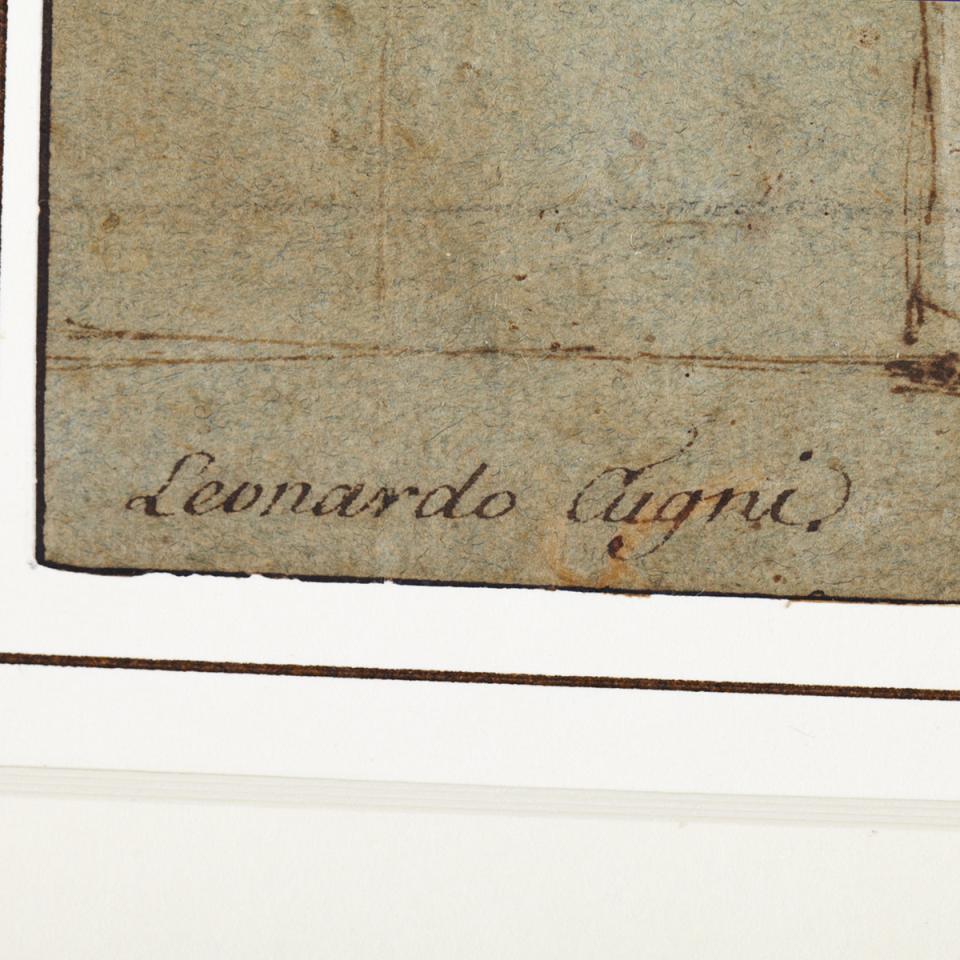Lot 230
Leonardo Cungi, Also Known as Cugni/Congi (fl. 1540’s- d.Rome, June 1569)

Lot 230 Details
Leonardo Cungi, Also Known as Cugni/Congi (fl. 1540’s- d.Rome, June 1569), Italian
THE EVANGELIST ST. MARK WRITING HIS GOSPEL DICTATED TO HIM BY AN ANGEL, MID 1500’S
Sepia pen and ink with graphite sketching lines heightened with sepia watercolour wash on grey paper; signed lower left in ink, numbered 2 in pencil lower right corner. In a sculpted arch. Matted.
Arched 8.75" x 14.75" — 22.2 x 37.5 cm.
Estimate $10,000-$15,000
Additional Images

Provenance:
Family Collection, France;
By descent to the present Private Collection, Montreal
Literature:
Oxford Grove Art, The Concise Grove Dictionary, 2002;
Oratorio di San Francesco, http://www.keytoumbria com/Perugia/Oratorio_S_Francesco.html;
Note:
This work is likely the drawing cited in Benezit from the Kaleman sale sold in 1858 in Paris as “Un apotre et un ange (dessin a la plume et au bistre sur papier gris)”.
Leonardo was born in Borgo San Sepolcro in the province of Arezzo in Tuscany. He was one of three Italian painters that worked in the 16th Century including his brother Giovanni Battista Cungi (fl. 1539-46) and Leonardo’s son, Francesco di Leonardo Cungi born in 1587. Leonardo worked in Rome after Raphael’s death and painted there in direct contact with Michelangelo’s followers. His works are closely related to Michelangelo’s and Raphael’s style.
The arched form of this work suggests that this was a preliminary drawing for a fresco. Its form also suggests that it may have been intended for a small oratory or a chapel with four lunettes containing figures of all four evangelists and it may be part of a series.
In regards to the prose and style, the contrasting axes of the shoulders and knees are indicative of a Mannerist aesthetic close to Raphael’s final Roman period, after he had fully absorbed Leonardo Da Vinci’s sfumato effects. The soft sfumato approach to the drawing is a hallmark of Leonardo Da Vinci’s style (a common practice by the mid 16th Century) while the more descriptive and fussy approach to the drapery in Leonardo Cungi’s drawing recalls Raphael’s late style and the style of Michelangelo’s followers. In fact, F.F.Mancini notes that the style of Leonardo Cungi has been aptly described as a fusion of themes from Michelangelo with the expressive modes of Raphael as exemplified in Cungi’s oil of 1558, the “Ascension of Christ”, in the Oratory of San Francesco at Perugia. The style of this work owes a great deal to the art of Perino del Vara and Raffaellino del Colle, who was also from san Sepolcro.
Vasari mentioned Leonardo Cungi among the painters who decorated the Vatican Belvedere in the 1560s. This was an important collaborative project involving Pirro Ligorio, Taddeo and Federico Zuccaro, Federico Barocci and Santi di Tito and may be the work for which Cungi received a payment from the papal datary in 1566. In 1569 Cungi was asked to complete the ceiling gilding in the nave of S Giovanni in Laterano for Pope Pius IV, a project first assigned to Daniele da Volterra. Cungi died before the commission was completed, and it was undertaken by Cesare Trapasso ( fl 1570s). Vasari recognized a drawing by Cungi of Michelangelo's fresco of the Last Judgement in the Sistine Chapel in the collection of Perino del Vaga at Perino's death in 1547. According to Giovanni Battista Armenini, the drawing would have formed part of Perino's collection of drawings sold by his daughter to the Mantuan antiquary and collector Jacopo Strada in 1566. Vasari assembled other designs by Cungi in his Libro dei disegni. A number of Cungi's drawings of the Last Judgement and of Michelangelo's Pauline Chapel frescoes survive (Florence, Uffizi) as do several other sheets (Cleveland, OH, Mus. A.; Paris, Louvre). See http://www.answers.com/topic/leonardo-cungi-1#ixzz2AvaakXup




